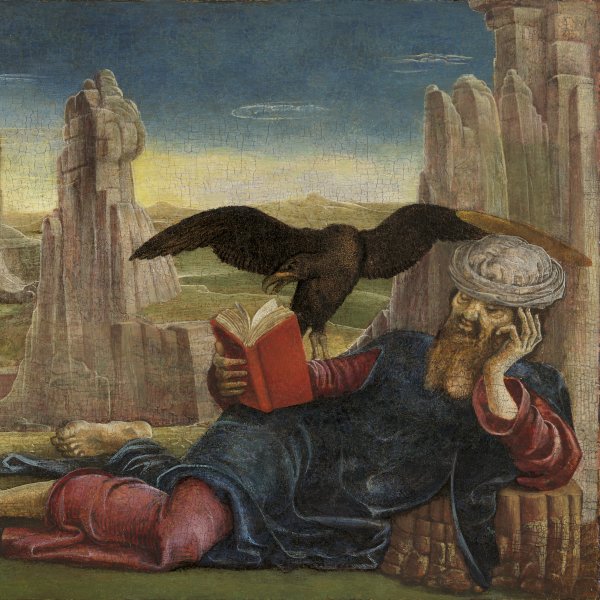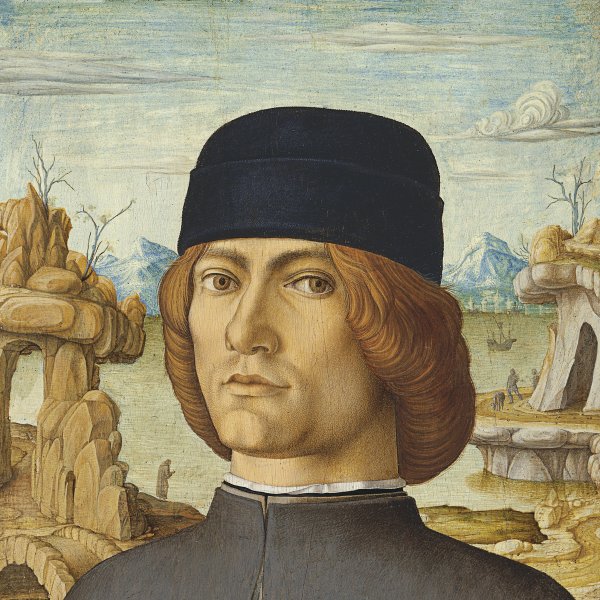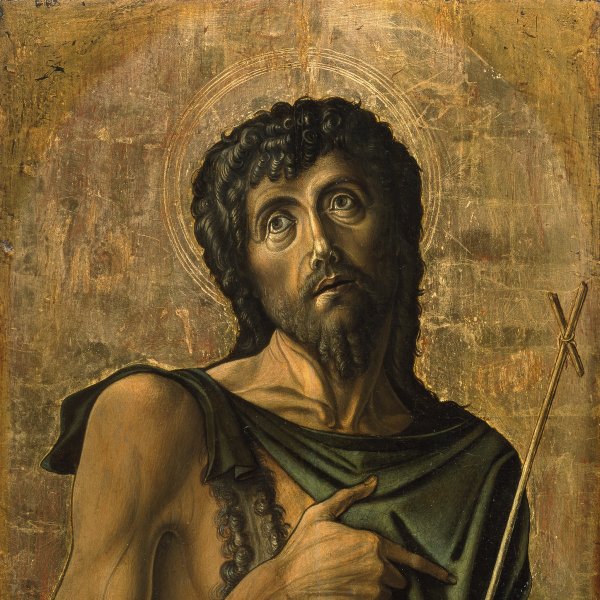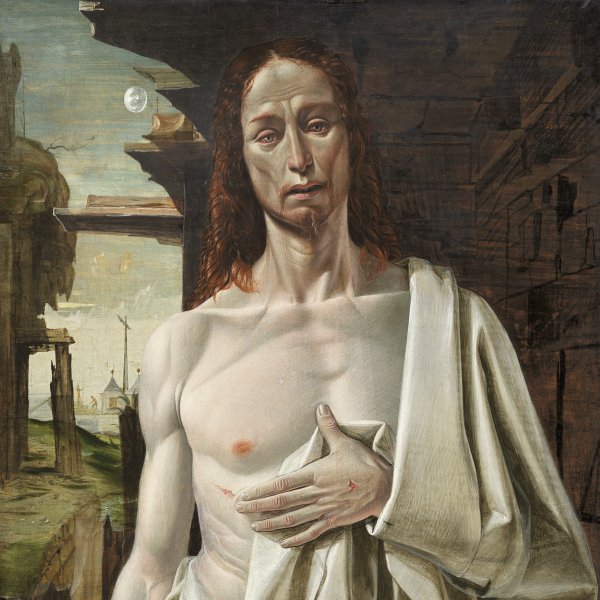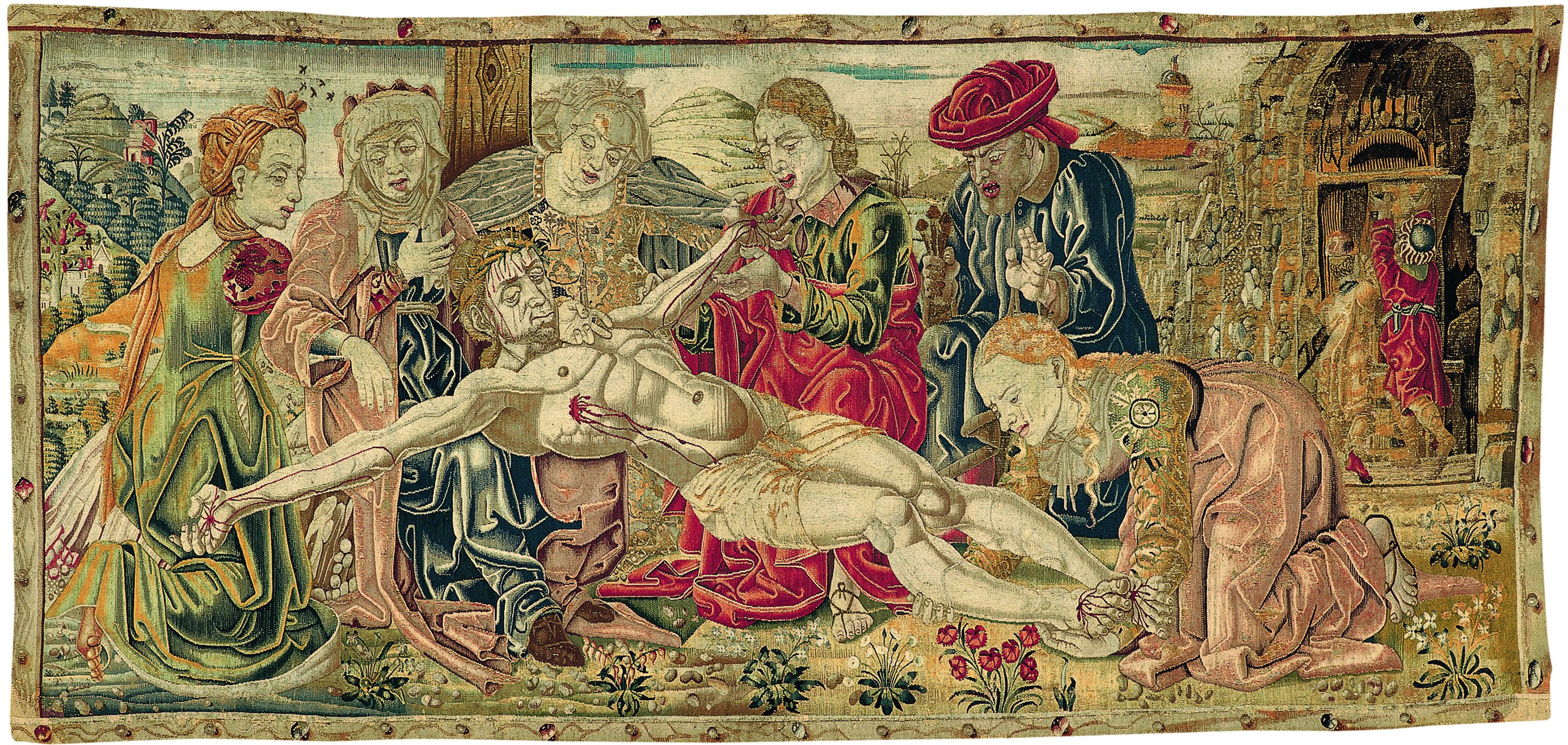Lamentation over the Body of the Dead Christ
This altar-front depicts the dead Christ surrounded by his Mother, Mary Salome, Mary Cleopas, St. John, shown holding his hand, Joseph of Arimathea, carrying the nails of Christ’s martyrdom, and Mary Magdalene, kneeling at his feet. The cartoon is thought to be the work of Cosmè Tura, and the tapestry was probably produced at the workshop of Rubinetto di Francia; both artists worked at the Duke of Ferrara’s court. The tapestry is outstanding not only for its unquestionable technical quality but also for the richness of the materials used: silk and metal threads interwoven with wool. Notice how the highly-expressive figures are placed against a carefully executed background landscape; in this respect the tapestry contrasts with the Franco-Flemish weaving tradition, which tended to use more ornamental compositions.
EA
Venturi identified this tapestry as a piece made in the Ferrarese workshop of Rubino or Rubinetto di Francia in 1474-1475. Rubinetto di Francia was at the service of the court of the Duke of Ferrara between 1457 and 1484, and received some important commissions. Although it is not documented, the cartoon may have been made by Cosmè Tura, as he too was working for the court, for which he made several designs for tapestries. The style of the figures, with the powerful anatomy of the body of Christ, marked with chiaroscuro effects, the extremely expressive faces with half-open mouths showing the teeth and deeply marked eyelids, and the composition as a whole, link it to the lunette of the same subject (Louvre Museum) forming part of the Roverella Polyptych commissioned by that family for the church of San Giorgio fuori le Mura in Ferrara.
Ortolani identified St. John and the Mary next to him as the Duke Ercole I D'Este and the Duchess Eleonor of Aragon, on the basis of the terracotta portraits which Guido Mazzoni made of them (Chiesa del Gesú in Ferrara), and associated Joseph of Arimathea with Acarino, the mythical founder of the lineage. These portraits of the duke and duchess as divine figures produced an aura of sacredness around the couple in a court where, due to its pious character, the religious ceremonies aimed precisely at this.
At the Cleveland Museum of Art there is a replica which differs from the tapestry of the Carmen Thyssen-Bornemisza Collection fundamentally in the small flowers in the foreground, the hills framing the composition, the headdress of one of the figures opening the sepulchre, and in a few details in the costumes and in the border, which in this case is a simple moulding. This piece may have been made in the workshop of Rubinetto di Francia by some of the craftsmen who worked with the master, who allowed themselves some licence in the decorative elements not marked in the cartoon provided by the painter. The tapestry from the Carmen Thyssen-Bornemisza Collection is considered the editio princeps due to it higher quality. There are documents indicating that this tapestry may have been woven in another occasion, possibly commissioned by the duke as a votive offering.
The interest of this tapestry, apart from its technical quality, the richness of the materials employed (silk and metal threads interwoven with the wool), and its chromatic harmony, lies in the small number of existing medieval tapestries of Italian manufacture. In Italy there was a greater tradition of wall painting due, among other factors, to the milder climate, which made it unnecessary to cover the walls with hangings in order to create warmer rooms. Thus, the tapestry workshops were characterised by a precarious existence, always linked to the patronage of a prince, closing down when he or his successors suspended their favour. This meant there was no tradition of weavers, and these manufactories depended for their creation on Flemish or French artisans who taught the art to the local weavers. Venice, Mantua and Ferrara were some of the courts where short-lived, though successful, manufactories were established, and another wave of success took place in Ferrara in the 16th century.
Often, the designs of Italian 15th-century tapestries were provided by painters who conceived such works as paintings which had to be adapted to the textile medium, which is why landscapes were given a greater importance, while in the Franco-Flemish weaving tradition the multi-coloured flat compositions tended to emphasise the ornamental character of the tapestry. In contrast with the latter tradition, in which the use or the border was not generalised until the 16th century, in this tapestry it is worth noting the rich moulding with inlaid precious stones acting as a frame, which accentuates the pictorial character of this work.
Laura Rodríguez Peinado





